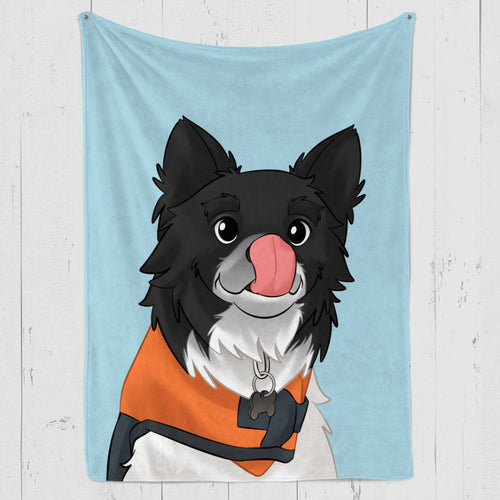
For those who adore dogs, they become an integral part of our daily lives, akin to family members. Similar to how we guide and establish boundaries for our children to help them adapt and coexist harmoniously within society, we also need to train our furry friends for a happy coexistence. And for this purpose, different training techniques exist, and one particular tool that often generates controversy in this field is the shock collar.
The reason behind this controversy is understandable, as the term "shock" brings to mind intense and unpleasant stimuli that can cause distress. Hence, many Individual questions: does a shock collar hurt a dog? In this article, we will delve into the facts to understand the answer to this question and address other concerns you may have. We will also explore alternative approaches that prioritize well-being and utilize positive reinforcement for our beloved canine companions.
What Are Dog Shock Collars?
Dog shock collars came into existence around the 1960s and as the name suggests, it was a kind of electronic collar that delivered one continuous shock at a fixed level irrespective of the temperament or situation of the dog. They were used to train and fix behavior issues like excessive barking.
These days, they are “humanized” with features like variable levels of shock control, buzzers, vibrators, and so on, and also given a more “marketable name”, electronics collar or e-collar. They come with a remote control so that the handler can administer the shock when the dog engages in undesired behavior or send a reliable stimulus to the dog from far away if the requirement arises.
Does a Shock Collar Hurt a Dog? Debunking Myths
1. Shock Collars: Are They Cruel to Dogs?
Unfortunately, the short answer is Yes! Although all manufacturers of electronic collar stress and advocate that they are completely safe, that might not be the case all the time. If you try the collar on yourself or just simply look for videos on youtube for reference, you will see that everyone has varying degrees of tolerance to the shock it provides. And in some cases, it has left burnt marks, though temporary. While some advocates argue that the stimulation is merely uncomfortable and not harmful, evidence suggests otherwise. Dogs can’t speak, so in no certain terms can we quantify what might look or feel mere discomfort to us, as the same for them.
And in the case of malfunction, we might not be able to realize it unless the dog develops some adverse mark like burn marks or skin issues, and it will be a pretty traumatic experience. In some cases, where multiple dogs are kept, burking by one can trigger the collar of an innocent dog, which will have a painful and negative effect.
Such a powerful tool in the wrong or untrained hands can indeed cause pain and distress to dogs, varying in intensity depending on the settings and the dog's sensitivity. Moreover, these things can cause more trauma to our furry friends instead of behavior modification. These are more of a tool for punishment than correcting measures. But modern e-collars like sound training collars or vibration or spray training collars are a more friendly approach and can be a handy tool if you want to let the dog go around without a leash and yet have assertive control.
2. How do Electric Collars Work?
Electric collars are like normal collars but with a small box-like attachment to them. They have a dust and water-repellent case with two metal prongs jutting out, these electrodes are for going deep inside the fur and making proper skin contact. These deliver high-voltage static pulses at the press of a button.
They usually have some kind of preemptive buzzer or vibration before they discharge the shock. This works as an alert for the dog. The level of the shock can be varied from the attachment or the remote. They have an operating range of 1⁄2 to 1 mile. These days we get a variety of e-collar with single or combined features like vibration, ultrasound, spray, and so on. The shock or the other features are triggered using a remote when the dog exhibits unwanted behavior. Repeated shock brutally deters the unwanted behavior and might give instant results out of fear but doesn’t address the underlying issue.
3. How Many Volts is a Dog Shock Collar Generally?
There is no one standard when it comes to shock collars. Depending on the manufacturer and model, the range of shocks available varies. Further, these collars are chosen based on the size of your dog. For example, small dogs like pugs are very sensitive, and the max level shouldn’t cross 90 to 100 volts. There are models available in the max range of 1000 volts, but these things can be very dangerous and painful for your dog, so it is advisable to use a collar with a max voltage of up to 450 volts, even for bigger dogs.
4. Is There Any Real Use Of Electronic Dog Collars?
Certain situations may arise where a shock collar or e-collar could serve as a valuable tool, particularly when addressing persistent negative behaviors that prove challenging to correct. However, these collars require a certain level of expertise to be utilized effectively and are not suitable for the average dog owner. Here are some of the use cases:
- Let's consider the case of an excessively aggressive dog. When conventional behavior management methods fail to yield desired results, a shock collar can be employed to interrupt the aggressive state of mind at the appropriate moment. This intervention should be accompanied by proper behavior management, by featuring renowned dog trainer Cesar Millan from the United States, who is well-known worldwide.
- Another practical application of e-collars is to provide assertive control over your dog while keeping them off the leash. Imagine taking your dog for a hike where they can freely roam and explore their surroundings to their heart's content without requiring constant supervision and tugging on the leash. In such scenarios, an e-collar can be incredibly beneficial. It allows you to call your dog back when necessary, maintain a watchful eye from a distance, and even prevent them from engaging in potentially harmful activities like chasing a snake or other dangerous elements outdoors. This level of control and freedom can typically only be achieved with a leash.
- E-collars equipped with a spray function can be utilized to release pheromones that help calm them down when you are dealing with dogs suffering from anxiety issues. Sometimes these spray collars are also used to simply spray puffs of water as a deterring agent to dissuade them from negative behaviors.
Why Should You Not Use a Shock Collar on Your Dog?

Continuous and inappropriate use of shock collars can have negative consequences on your dog and can affect the relationship you have with your pet. Here are some reasons why shock collars should be avoided:
1. Potential for Pain and Fear:
Shock collars are an extreme tool for most cases, and they should be avoided as far as possible. Your dog might suffer from burns and repetitive bouts of pain and agony, even if that was not your intention. Soon your dog will associate you with the pain and unpleasant electric stimuli, and the bond of love and affection will erode. It will become a bond of fear, psychosis and not loyalty. In cases of houses with multiple dogs, if you have a bark-sensing collar, it might get triggered by the barking of other dogs, and the target dog will continuously surfer without even understanding what is going wrong or what is being asked of him. This can be an extremely stressful and anxious situation for the dog.
2. Lack of Addressing Underlying Behaviors:
People tend to lean towards shock collars because they give instant results, but what they fail to understand is that this doesn’t address the underlying issue that is triggering the negative behavior. And most of these issues can be dealt with instead of leaning on this harsh measure.
If you don’t address the issue and don’t show them what they should do instead of the negative habit, they are simply learning that they get shocked if they do it. They might stop doing that temporarily out of fear but will resort back to the old habit when the collar is removed. Even the timing of shock matters; untimed inputs will send them the wrong message and will also increase their anxiety levels and even aggression. Which is detrimental to your dog’s wellbeing.
3. Effective Alternatives Available:
There is a huge array of pain-free training options available to teach our dogs what we want them to do and what the boundaries are. Advanced training programs, patience, and using positive reinforcement training like rewarding desirable behaviors with treats, praise, or play can encourage the dogs to repeat the desired action and stay away from negative habits. Dogs prefer listening and pleasing their owners, so it shouldn’t be that hard.
Exploring Alternative Training Methods
1. Positive Reinforcement Training:
This method focuses on rewarding desirable behaviors with treats, praise, or play, creating positive associations, and encouraging the dog to repeat those actions.
2. Clicker Training:
Clicker training uses a distinct sound to mark desired behavior, followed by a reward. It enables precise timing and clear communication between you and your dog.
3. Reward-Based Training:
Reward-based training involves providing rewards whenever the dog displays the desired behavior, motivating them to repeat it.
Final Thoughts
Shock collars might have been a go-to tool for many in the past to deal with any negative behavior or training purposes as it gives instant results, but every dog owner has to understand the suffering that comes with it, the potential harm they can cause to the dog and how it affects the bonding. It is always best to explore techniques that prioritize positive reinforcement, trust, and building a strong bond with our furry companions. Reward-based training, positive reinforcement, and clicker training can guide our dogs toward well-behaved and happy life and encourage them to follow your command more keenly. Remember, you are a protector and savior for your dog. Their bond is of loyalty hence training should be a collaborative and positive experience for both you and your dog.
Frequently Asked Questions
Does a dog collar hurt Humans?
Through the testing of shock collars on humans, individuals have gained firsthand experience of the painful effects they inflict. The impact is not limited to the momentary pain caused by the shock; it can also result in a lingering burning sensation that can persist throughout the day and potentially lead to more severe issues, such as discomfort and muscle aches.
How many volts would kill a dog?
A shock collar with high voltage has the potential to inflict severe distress on your dog. However, it is important to note that the static current emitted by the shock collar is incapable of fatality to the dog.
Reference Link
Recommended Articles :
Similar Articles
Latest Review on Woof Blankets
To have such a masterpiece by my side every day is a gift for me and my memories with Rex. Thank you WoofBlankets for such an opportunity to recreate his image on a blanket.Lara o’ Miguel US, California

COLLECTION WORTH EVERY PENNY
BEST SELLERS
-
4th of July Custom Pet Blanket
![4th of July Custom Pet Blanket Online]()
- NEW
- -39%
BlanketsSHOP NOW- Regular price
- from $69.95
- Sale price
- from $69.95
- Regular price
-
$114.95 - Unit price
- per
Sold out -
Woofy Single Color Custom Pet Blanket
![Woofy Single Custom Pet Blanket – Woof Blanket]()
- -41%
BlanketsSHOP NOW- Regular price
- from $64.95
- Sale price
- from $64.95
- Regular price
-
$109.95 - Unit price
- per
Sold out -
Summer Time Custom Pet Blanket
![Summer Time Custom Pet Blanket]()
- -39%
BlanketsSHOP NOW- Regular price
- from $69.95
- Sale price
- from $69.95
- Regular price
-
$114.95 - Unit price
- per
Sold out -
The Admiral - Custom Pet Portrait
![The Admiral - Custom Pet Portrait Online]()
- NEW
- -25%
CanvasSHOP NOW- Regular price
- from $59.95
- Sale price
- from $59.95
- Regular price
-
$79.95 - Unit price
- per
Sold out -
Wings of Loyalty - Custom Pet Portrait
![]()
- NEW
CanvasSHOP NOW- Regular price
- from $59.95
- Sale price
- from $59.95
- Regular price
-
- Unit price
- per
Sold out -
Celestial Paws - Custom Pet Portrait
![]() CanvasSHOP NOW
CanvasSHOP NOW- Regular price
- from $59.95
- Sale price
- from $59.95
- Regular price
-
- Unit price
- per
Sold out -
Woof Splash Custom Pet Blanket
![Woof Splash Custom Pet Blanket]()
- -39%
BlanketsSHOP NOW- Regular price
- from $69.95
- Sale price
- from $69.95
- Regular price
-
$114.95 - Unit price
- per
Sold out -
The Loyal Soul - Custom Pet Portrait
![]()
- NEW
SHOP NOW- Regular price
- from $59.95
- Sale price
- from $59.95
- Regular price
-
- Unit price
- per
Sold out -
Modern Pet Portraits
![Cute Dog Modern Pet Portraits Online]()
- NEW
- -36%
CanvasSHOP NOW- Regular price
- from $59.95
- Sale price
- from $59.95
- Regular price
-
$93.95 - Unit price
- per
Sold out -
Cartoonized Pet Portraits (New)
![Cartoonized Pet Custom Portraits Online]()
- -36%
SHOP NOW- Regular price
- from $59.95
- Sale price
- from $59.95
- Regular price
-
$93.95 - Unit price
- per
Sold out -
Pet Memorial Custom Photo Collage Blanket
![Personalized pet memorial quilt with photos]()
- -41%
BlanketsSHOP NOW- Regular price
- from $64.95
- Sale price
- from $64.95
- Regular price
-
$109.95 - Unit price
- per
Sold out -
The French Sailor - Custom Pet Portrait
![]()
- -25%
CanvasSHOP NOW- Regular price
- from $59.95
- Sale price
- from $59.95
- Regular price
-
$79.95 - Unit price
- per
Sold out -
The Policeman - Custom Pet Portrait
![]()
- NEW
- -25%
CanvasSHOP NOW- Regular price
- from $59.95
- Sale price
- from $59.95
- Regular price
-
$79.95 - Unit price
- per
Sold out -
The General - Custom Pet Portrait
![]()
- NEW
- -25%
CanvasSHOP NOW- Regular price
- from $59.95
- Sale price
- from $59.95
- Regular price
-
$79.95 - Unit price
- per
Sold out -
Woof Love Custom Pet Blanket
![Woof Love Custom Pet Blanket]()
- -39%
BlanketsSHOP NOW- Regular price
- from $69.95
- Sale price
- from $69.95
- Regular price
-
$114.95 - Unit price
- per
Sold out -
The Ambassador - Custom Pet Portrait
![The Ambassador - Custom Pet Portrait Online]()
- NEW
- -25%
CanvasSHOP NOW- Regular price
- from $59.95
- Sale price
- from $59.95
- Regular price
-
$79.95 - Unit price
- per
Sold out -
Fall In Love Custom Pet Blanket
![Fall In Love Custom Dog Blanket]()
- NEW
- -39%
BlanketsSHOP NOW- Regular price
- from $69.95
- Sale price
- from $69.95
- Regular price
-
$114.95 - Unit price
- per
Sold out -
The Classy Lady - Custom Pet Portrait
![The Classy Lady]()
- NEW
- -25%
CanvasSHOP NOW- Regular price
- from $59.95
- Sale price
- from $59.95
- Regular price
-
$79.95 - Unit price
- per
Sold out -
The Duke - Custom Pet Portrait
![The Duke - Custom Pet Portrait]()
- NEW
- -25%
CanvasSHOP NOW- Regular price
- from $59.95
- Sale price
- from $59.95
- Regular price
-
$79.95 - Unit price
- per
Sold out -
Dog In Suit- Custom Pet Portrait
![Dash Dog In Suit- Custom Pet Portrait Online]()
- NEW
- -25%
CanvasSHOP NOW- Regular price
- from $59.95
- Sale price
- from $59.95
- Regular price
-
$79.95 - Unit price
- per
Sold out -
The Princess - Custom Pet Portrait
![]()
- NEW
- -25%
CanvasSHOP NOW- Regular price
- from $59.95
- Sale price
- from $59.95
- Regular price
-
$79.95 - Unit price
- per
Sold out -
Modern Pet Portrait with One Mug
![Modern Pet Portrait with One Mug]()
- -25%
Print MaterialSHOP NOW- Regular price
- from $99.95
- Sale price
- from $99.95
- Regular price
-
$133.95 - Unit price
- per
Sold out -
The Aristocrat - Custom Pet Portrait
![The Aristocrat - Custom Pet Portrait At Best Price]()
- NEW
- -25%
CanvasSHOP NOW- Regular price
- from $59.95
- Sale price
- from $59.95
- Regular price
-
$79.95 - Unit price
- per
Sold out -
Single Color Custom Blanket with 1 Mug
![Single Color Custom Blanket with 1 Mug]() BlanketsSHOP NOW
BlanketsSHOP NOW- Regular price
- from $99.95
- Sale price
- from $99.95
- Regular price
-
- Unit price
- per
Sold out -
Single Color Custom Blanket with 2 Pillows
![Single Color Custom Pet Blanket with 2 Pillows]()
- -21%
BlanketsSHOP NOW- Regular price
- from $99.95
- Sale price
- from $99.95
- Regular price
-
$125.95 - Unit price
- per
Sold out -
The Dog in Suit Custom Pet Mug
![]()
- -20%
MugsSHOP NOW- Regular price
- $39.95
- Sale price
- $39.95
- Regular price
-
$49.95 - Unit price
- per
Sold out -
Angel Custom Pet Mug
![]()
- -20%
MugsSHOP NOW- Regular price
- $39.95
- Sale price
- $39.95
- Regular price
-
$49.95 - Unit price
- per
Sold out -
This Human Belongs To - Custom Pet Mug
![]()
- NEW
- -20%
MugsSHOP NOW- Regular price
- $39.95
- Sale price
- $39.95
- Regular price
-
$49.95 - Unit price
- per
Sold out -
It's Not Dog Hair Custom Pet Mug
![]()
- NEW
- -20%
MugsSHOP NOW- Regular price
- $39.95
- Sale price
- $39.95
- Regular price
-
$49.95 - Unit price
- per
Sold out -
My Dog Is My Valentine Custom Pet Mug
![]()
- NEW
- -20%
MugsSHOP NOW- Regular price
- $39.95
- Sale price
- $39.95
- Regular price
-
$49.95 - Unit price
- per
Sold out -
3 Photos With Message Custom Pet Mug
![]()
- NEW
- -20%
MugsSHOP NOW- Regular price
- $39.95
- Sale price
- $39.95
- Regular price
-
$49.95 - Unit price
- per
Sold out -
My Valentine Has Four Legs- Personalized Mugs
![]()
- NEW
- -20%
MugsSHOP NOW- Regular price
- $39.95
- Sale price
- $39.95
- Regular price
-
$49.95 - Unit price
- per
Sold out -
Dog Mamma Custom Pet Coffee Mug
![]()
- -20%
MugsSHOP NOW- Regular price
- $39.95
- Sale price
- $39.95
- Regular price
-
$49.95 - Unit price
- per
Sold out -
Uncle Sam - Custom Pet Portrait
![]()
- NEW
- -25%
CanvasSHOP NOW- Regular price
- from $59.95
- Sale price
- from $59.95
- Regular price
-
$79.95 - Unit price
- per
Sold out -
The Revolutionary Emperor - Custom Pet Portrait
![]()
- NEW
- -25%
CanvasSHOP NOW- Regular price
- from $59.95
- Sale price
- from $59.95
- Regular price
-
$79.95 - Unit price
- per
Sold out -
The Princess Paws - Custom Pet Portrait
![]()
- -25%
CanvasSHOP NOW- Regular price
- from $59.95
- Sale price
- from $59.95
- Regular price
-
$79.95 - Unit price
- per
Sold out -
Exclusive Custom Pet Blanket
![Exclusive Custom Pet Blanket]()
- -39%
BlanketsSHOP NOW- Regular price
- from $69.95
- Sale price
- from $69.95
- Regular price
-
$114.95 - Unit price
- per
Sold out -
The Dark Crusader Knight - Custom Pet Portrait
![]()
- -25%
CanvasSHOP NOW- Regular price
- from $59.95
- Sale price
- from $59.95
- Regular price
-
$79.95 - Unit price
- per
Sold out





























































